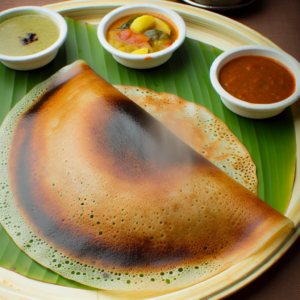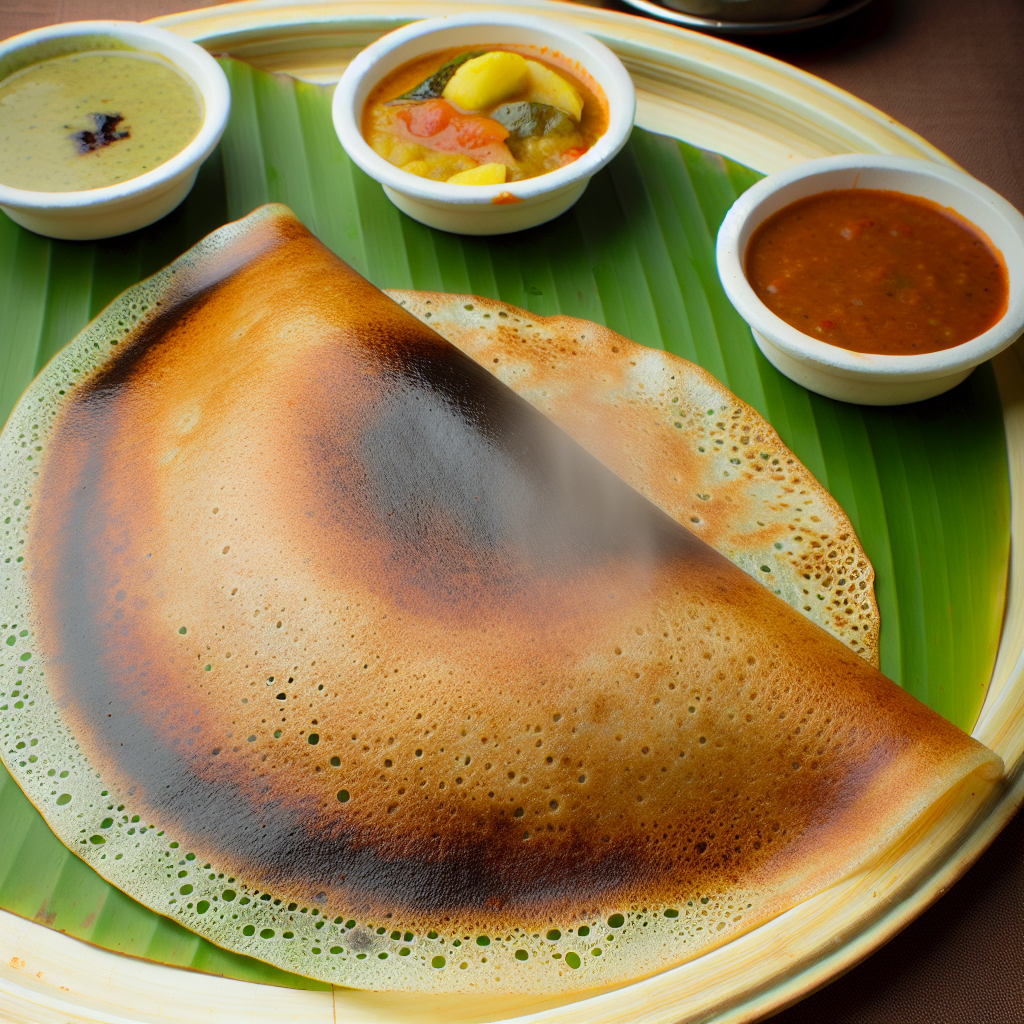The Story of Masala Dosa: From Batter to Bliss
Introduction: The Allure of Masala Dosa
The story of Masala Dosa begins with its universal appeal. This golden-brown, crispy crepe, filled with a spiced potato mixture and served with tangy chutneys and steaming sambar, is more than a meal—it’s a sensory experience. Whether at a bustling Bangalore street stall or a fine-dining restaurant in New York, the Masala Dosa captivates with its textures, flavors, and aromas. As food historian K.T. Achaya noted, “The dosa is a cultural artifact that tells the story of India’s culinary evolution.”
Its versatility makes it a breakfast staple, a light lunch, or a midnight snack, uniting people across age, geography, and dietary preferences. Let’s explore the story of Masala Dosa through its origins, preparation, and global impact.

Origins: Tracing the Roots of a Culinary Icon
The story of Masala Dosa is rooted in South India. While the dosa, a fermented rice-and-lentil crepe, dates back over 1,500 years to Tamil Nadu, as noted in Sangam literature, the Masala Dosa emerged in Karnataka’s Udupi region in the 20th century. The spiced potato filling, a modern addition, was likely inspired by economic necessity. Potatoes, introduced by the Portuguese in the 16th century, were affordable and filling. Udupi Brahmins combined them with the dosa to create a nutritious, economical dish.
From a regional specialty, the Masala Dosa became a global phenomenon, featured in food festivals and UNESCO’s intangible cultural heritage list, showcasing its timeless appeal.
The Art of the Batter: Perfecting Fermentation
At the heart of the story of Masala Dosa is its batter, made from rice and urad dal (black gram) in a 3:1 or 4:1 ratio. The ingredients are soaked, ground, and fermented overnight, creating a tangy, bubbly batter. This fermentation process, influenced by temperature and humidity, enhances flavor and digestibility.
Fermentation is a cherished tradition in South Indian households, with each family adding unique touches, making the batter a cornerstone of the Masala Dosa’s allure.
The Crisp Factor: Mastering the Dosa Crepe
A perfect Masala Dosa is defined by its crisp, golden exterior. Traditionally cooked on a cast-iron griddle, the batter is spread thinly, drizzled with oil or ghee, and cooked to perfection. Timing and technique are key to achieving the ideal balance of crunch and softness.
As chef Madhur Jaffrey says, “Making a dosa is like creating a work of art—it’s all about balance and precision.” This artistry is central to the story of Masala Dosa.
Spiced Perfection: Crafting the Masala Filling
The spiced potato filling, or “masala,” is the soul of the Masala Dosa. Made by sautéing boiled potatoes with onions, green chilies, mustard seeds, curry leaves, and turmeric, it transforms humble ingredients into a flavorful masterpiece. Regional variations, like Karnataka’s jaggery-sweetened masala or Tamil Nadu’s spicier version, reflect local tastes.
This filling is a cultural expression, adding depth to the story of Masala Dosa.
Chutney and Sambar: Essential Companions
No story of Masala Dosa is complete without its accompaniments. Coconut chutney, made from fresh coconut and tempered spices, complements the spicy masala. Tomato, mint, and peanut chutneys add further variety. Sambar, a tangy lentil stew with tamarind and vegetables, enhances the meal’s flavor and nutrition.
These sidekicks elevate the Masala Dosa, making every bite a symphony of flavors.
Regional Variations and Global Appeal
The story of Masala Dosa extends across India with regional twists, like the Mysore Masala Dosa with its spicy chutney spread or Tamil Nadu’s paper-thin versions. Globally, it has won hearts in Indian restaurants in London and food trucks in California, cementing its status as a culinary icon.
Health Benefits: A Nutritious Indulgence
Masala Dosa is not just delicious but also nutritious. The fermented batter is rich in probiotics, while the potato filling provides fiber and essential nutrients. Paired with protein-packed sambar, it’s a balanced meal that fits into a healthy diet.
Cultural Significance: A Dish That Unites
The story of Masala Dosa is one of unity. It transcends cultural and geographic boundaries, bringing people together at family gatherings, street food stalls, and global eateries. It’s a symbol of South Indian heritage and culinary artistry.
Adigas Franchise: A Modern Take on Tradition
The story of Masala Dosa continues with modern franchises like Adigas, which blends tradition with innovation. Here’s how Adigas enhances the Masala Dosa experience:
- Consistency in Quality: Authentic Masala Dosa with uniform taste across outlets.
- Innovative Menu: Unique offerings like Cheese Masala Dosa and Ragi Dosa.
- Global Reach: Bringing South Indian flavors to international audiences.
- Sustainability Practices: Eco-friendly sourcing and packaging.
- Community Engagement: Promoting South Indian cuisine through cultural events.
Adigas ensures the story of Masala Dosa remains vibrant, adapting to modern tastes while honoring its roots. Visit Adigas to experience their authentic Masala Dosa.
Conclusion: A Timeless Culinary Journey
The story of Masala Dosa is a journey through history, culture, and flavor. From its South Indian origins to its global fame, it remains a dish that brings joy with every crispy bite. Whether at a local eatery or a franchise like Adigas, the Masala Dosa continues to captivate, proving that great food transcends time and borders.
